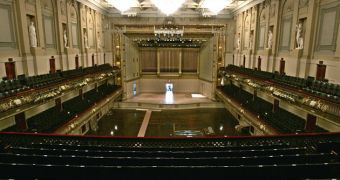The acoustical magic of the Boston Symphony Hall is due to the fact that the architectural company that built it resorted, for the first time in history, to the services of a physicist. It was built based on the design of Leipzig's Gewandhaus, which was devastated later on, during World War II.
Constructed in the late 1890s, the imposing structure did not look like any other American concert hall, as most of them were built in the wider form of a fan. Instead, it respected the European high, narrow and deep design of its prominent predecessor.
On top of that, the company responsible for its architectural structuring, McKim, Mead & White, decided to employ a young Harvard assistant physics professor, Wallace Clement Sabine, as consultant in acoustics matters. This resulted in an unprecedented application of the scientific acoustical principles in the design of a concert hall, and one of the largest while at it. Nobody was disappointed with the outcome. The wood that made up the flooring was the only soft material used in the construction of the great hall, which was otherwise built of steel, plaster and bricks.
The narrow side balconies prevent sound trapping, while the pillars of the stage lean inwards, so as to direct the sound properly. The niches in the walls and the coffering in the ceiling provide a maximal aural sound experience for each seat in the room. This experience is so intense and different from any other that the Boston Symphony Hall is mentioned among the world's top 3 concert halls in terms of acoustics, next to the Musikverein in Vienna, Austria, and the Concertgebouw in Amsterdam, the Netherlands.
Also, architecturally speaking, it is one of the top 10 concert halls in the world. In 1999, 99 years from the first concert that ever took place within its walls, which was led by maestro Wilhelm Gericke, the Boston Symphony Hall was labeled a National Historic Landmark.

 14 DAY TRIAL //
14 DAY TRIAL //